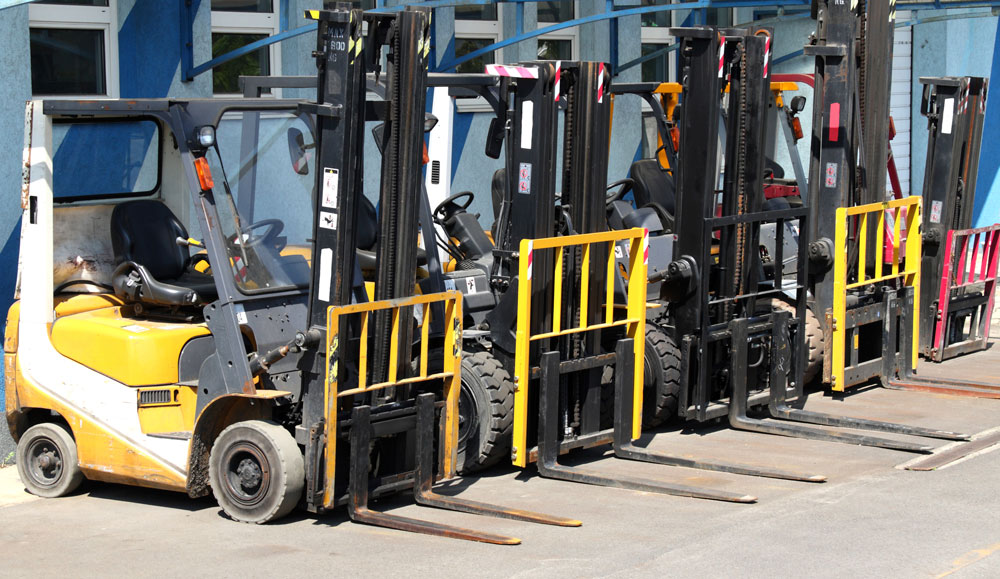Wasp Barcode Technologies: The Barcode Solution People
How to Improve Your Business Fixed Asset Auditing Process

Novice business owners may not think much about their
fixed assets, long-term assets that are used in the production of inventory and income, beyond purchasing them. These assets, which are often the largest investments a company makes and cannot be easily converted into cash, must be monitored throughout their useful life, for financial, logistical and legal reasons.
In the past, simple and in-depth audits alike were done by hand,
utilizing spreadsheets and calculators. Another resource that was heavily taxed by manual audits: the energies, hours and skills of the over-worked employees tasked with keeping track of assets that had either never been properly monitored, had not been accurately depreciated, or had disappeared altogether. The recent emergence of asset management software and systems has changed the landscape considerably.
[su_divider top="no" size="2"]
[su_divider top="no" size="2"]
Automated software makes auditing fixed assets, from the time of their purchase to their decommissioning, manageable, and helps businesses stay in the black and on the right side of the law. Below, we outline the major areas of your business that are affected when fixed assets are improperly or insufficiently monitored.
Financial savings
As noted above, fixed assets (also known as hard assets) are often the largest items on a company’s balance sheet (examples of fixed assets include real estate, office or manufacturing equipment, laptops, vehicles and computing software). Companies can be subject to personal property taxes, which are predicated on fixed asset accounting records. Companies commonly overpay their taxes by
10 to 20% thanks to “ghost assets,” or assets which no longer physically exist for a number of reasons.
Ghost assets lead to higher taxes and insurance bills, as well as false assessments of enterprise value that can scare off investors and customers.
A failure to
depreciate fixed assets properly can also result in problematic financial records. Depreciation is the systematic reduction in the recorded cost of an asset, a portion of the cost of the asset must be matched to the revenue that it generates. Accountants (or better yet, automated systems) subtract the accumulated depreciation from the asset purchase price to get the asset’s carrying value; the company’s total amount of carrying values for all assets, minus the depreciation of those assets once they are used up, equals the company’s balance. Thus, despite not being involved in the company’s yearly cash flow, fixed assets are included the calculation of net income. An asset management system that keeps track of fixed asset depreciation, and also monitors when maintenance work and other upkeep is needed, is hugely valuable in this regard.
Finally, an automated system that eases the auditing process reduces the labor hours needed to conduct regular and year-end audits, for some companies, hours are cut by the thousands. This allows employees to use their time more wisely and makes them of more use to the company, while massively reducing the number of errors that a manual system practically ensures (studies show that nearly 90% of spreadsheets with more than 150 rows have “significant errors”).

Logistical issues
Some fixed assets don’t go anywhere once you purchase them, namely, things such as real estate and cloud computing software stay put. Some assets are used by numerous employees and are often checked out (and then checked back in) for communal use, such as mobile computers and vehicles. When paper-based systems are used to track the whereabouts and usage of these assets, things often go missing or return in sub-par shape, without updated records.
With an asset management system, companies find that the process of monitoring and managing their assets is effectively streamlined. Expensive assets are less likely to go missing (whether due to human error or even theft,
which is remarkably common) when accountability is automated, and the return on investment for these items is maximized when routine maintenance and repairs become standard.
[su_divider top="no" size="2"]
“With an asset management system, companies find that the process of monitoring and managing their assets is effectively streamlined.”
[su_divider top="no" size="2"]
A reduction in logistical issues, in turn, improves the company’s financials as well: Less money is spent on replacing assets, of course, but the time it takes to audit is often
drastically reduced for companies that install asset management software, from as much as several weeks down to as little as less than a day.
Legal dilemmas
The
tax codes and burdens on small businesses in particular can be daunting. Those with significant fixed assets can have a large volume of data that needs to be properly taxed, including fixed asset acquisitions, sales tax, multiple taxing jurisdictions (federal, state, county, municipal) and much more. If an IRS audit comes around and finds your books out of order, that can mean major penalties. Institutions that received fixed assets by grants, such as government or charity organizations, that don’t classify and track asset details correctly could lose or be forced to repay those funds.
Ghost assets, as mentioned above, are a major part of inaccurate books and can often lead to false (usually inflated) enterprise value. Learning how to clear out those assets and deduct their remaining costs is crucial to maintaining balanced and legal finances.
Another facet of
asset software management is security. As employees continue to move towards exclusively using mobile devices at work (and it’s believed that nearly half of employees work on their personal tablets and smartphones), they are becoming less diligent about practicing good security. Whether or not your company allows (or even encourages) workers to BYOD (bring their own device), it’s important to emphasize awareness of malware infections and user-negligence as much as productivity when working on a mobile device.
While it’s not the most glamorous part of owning a business, ensuring that your
fixed assets are accounted for, monitored and can stand up to an internal and external audit is one of the most important aspects of keeping your company viable and profitable. In order to make sure an asset is “managed” each time a transaction takes place (i.e. checking out by an employee, disposal at the end of its useful life), consider integrating barcode asset tags into your system. A quality barcode system will track items and perform data analysis with a simple scan. Best of all, as mobile technology continues to proliferate, asset databases can be updated with mobile computers and other devices in real-time.
How would using a dedicated asset management system prevent your company from experiencing financial loss and logistical nightmares?




